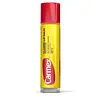What's inside
What's inside
 Key Ingredients
Key Ingredients

 Benefits
Benefits

 Concerns
Concerns

 Ingredients Side-by-side
Ingredients Side-by-side

Water
Skin ConditioningDimethicone
EmollientSaccharomyces/Zinc Ferment
Skin ConditioningPanthenol
Skin ConditioningButylene Glycol
HumectantEnantia Chlorantha Bark Extract
Skin ConditioningOleanolic Acid
Skin ConditioningGlycerin
HumectantSodium Polyacrylate
AbsorbentPropylene Glycol
HumectantGlycyrrhiza Glabra Root Extract
BleachingAllantoin
Skin ConditioningSalicylic Acid
MaskingGlyceryl Stearate
EmollientCocamidopropyl Dimethylamine
EmulsifyingZea Mays Starch
AbsorbentHydrolyzed Corn Starch
HumectantHydrolyzed Corn Starch Octenylsuccinate
AbsorbentCarbomer
Emulsion StabilisingPhenoxyethanol
PreservativeEthylhexylglycerin
Skin ConditioningSodium Hydroxide
BufferingCI 42090
Cosmetic ColorantWater, Dimethicone, Saccharomyces/Zinc Ferment, Panthenol, Butylene Glycol, Enantia Chlorantha Bark Extract, Oleanolic Acid, Glycerin, Sodium Polyacrylate, Propylene Glycol, Glycyrrhiza Glabra Root Extract, Allantoin, Salicylic Acid, Glyceryl Stearate, Cocamidopropyl Dimethylamine, Zea Mays Starch, Hydrolyzed Corn Starch, Hydrolyzed Corn Starch Octenylsuccinate, Carbomer, Phenoxyethanol, Ethylhexylglycerin, Sodium Hydroxide, CI 42090
 Reviews
Reviews

Ingredients Explained
These ingredients are found in both products.
Ingredients higher up in an ingredient list are typically present in a larger amount.
Salicylic Acid (also known as beta hydroxy acid or BHA) is a well-known ingredient for treating skin that struggles with acne and clogged pores. It exfoliates both the skin's surface and deep within the pores to help clear out buildup, control oil, and reduce inflammation.
Unlike AHAs (alpha hydroxy acids), salicylic acid is oil-soluble. This allows it to penetrate into pores which makes it especially effective for treating blackheads and preventing future breakouts.
Salicylic acid is also known for its soothing properties. It has a similar structure to aspirin and can calm inflamed or irritated skin, making it a good option for acne-prone skin that is also sensitive.
Concentrations of 0.5-2% are recognized by the U.S. FDA as an over-the-counter topical acne product.
It can cause irritation and/or dryness if one's skin already has a compromised moisture barrier, so it's best to focus on repairing that before introducing this ingredient into your routine.
While salicylic acid does not increase sun sensitivity, it’s still important to wear sunscreen daily to protect your skin.
If you are looking for the ingredient called BHA or Butylated Hydroxyanisole, click here.
Learn more about Salicylic Acid